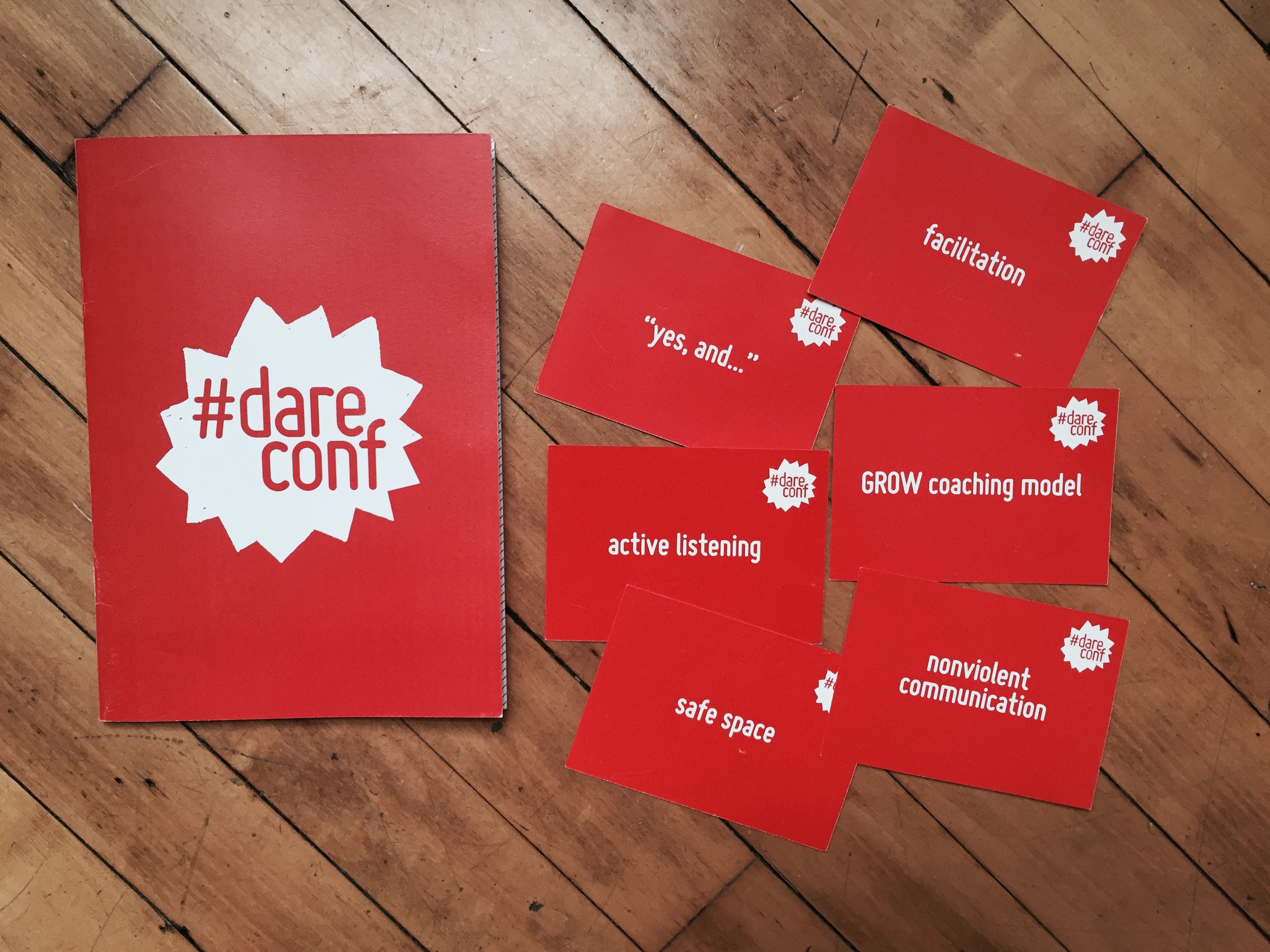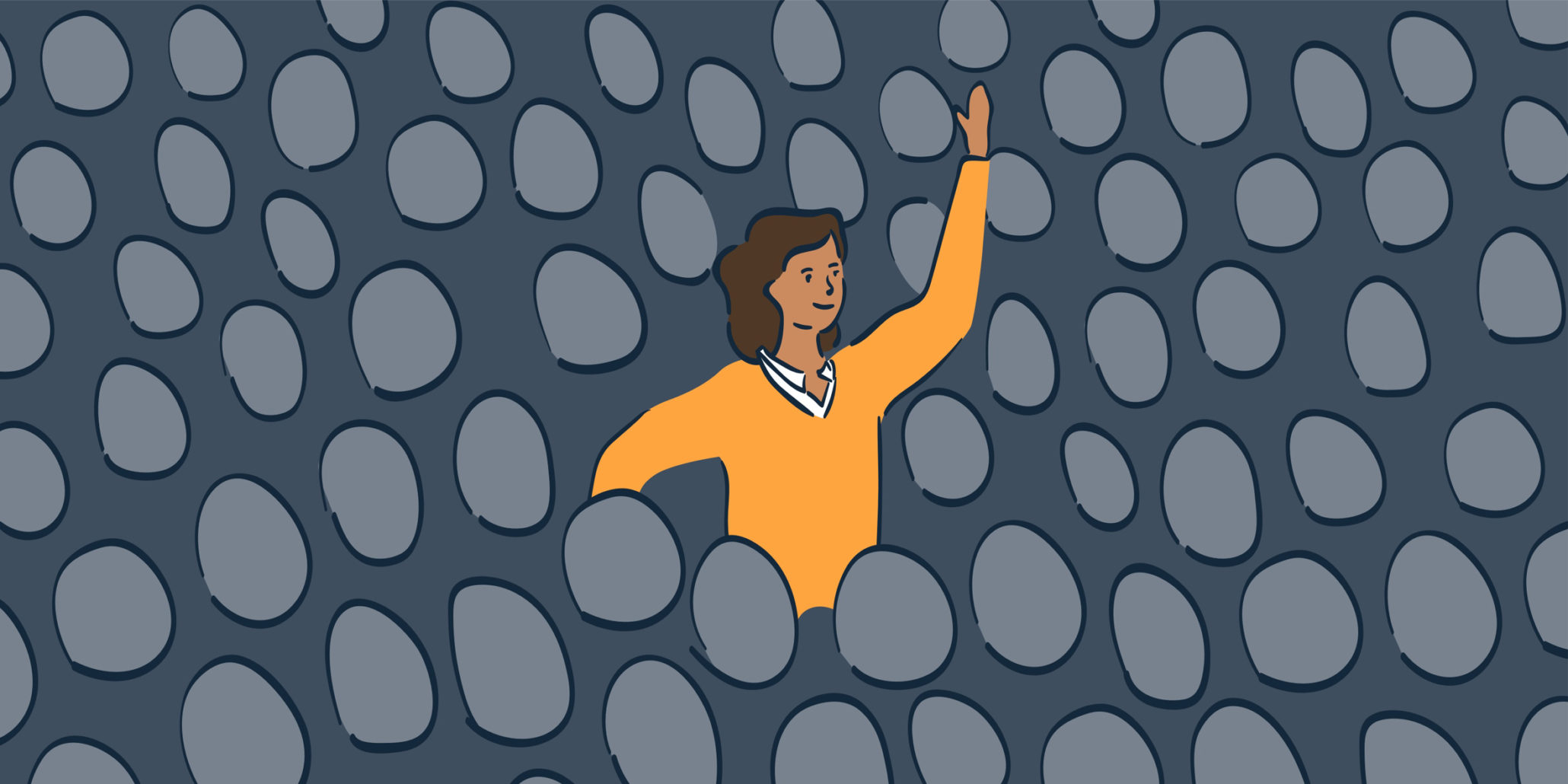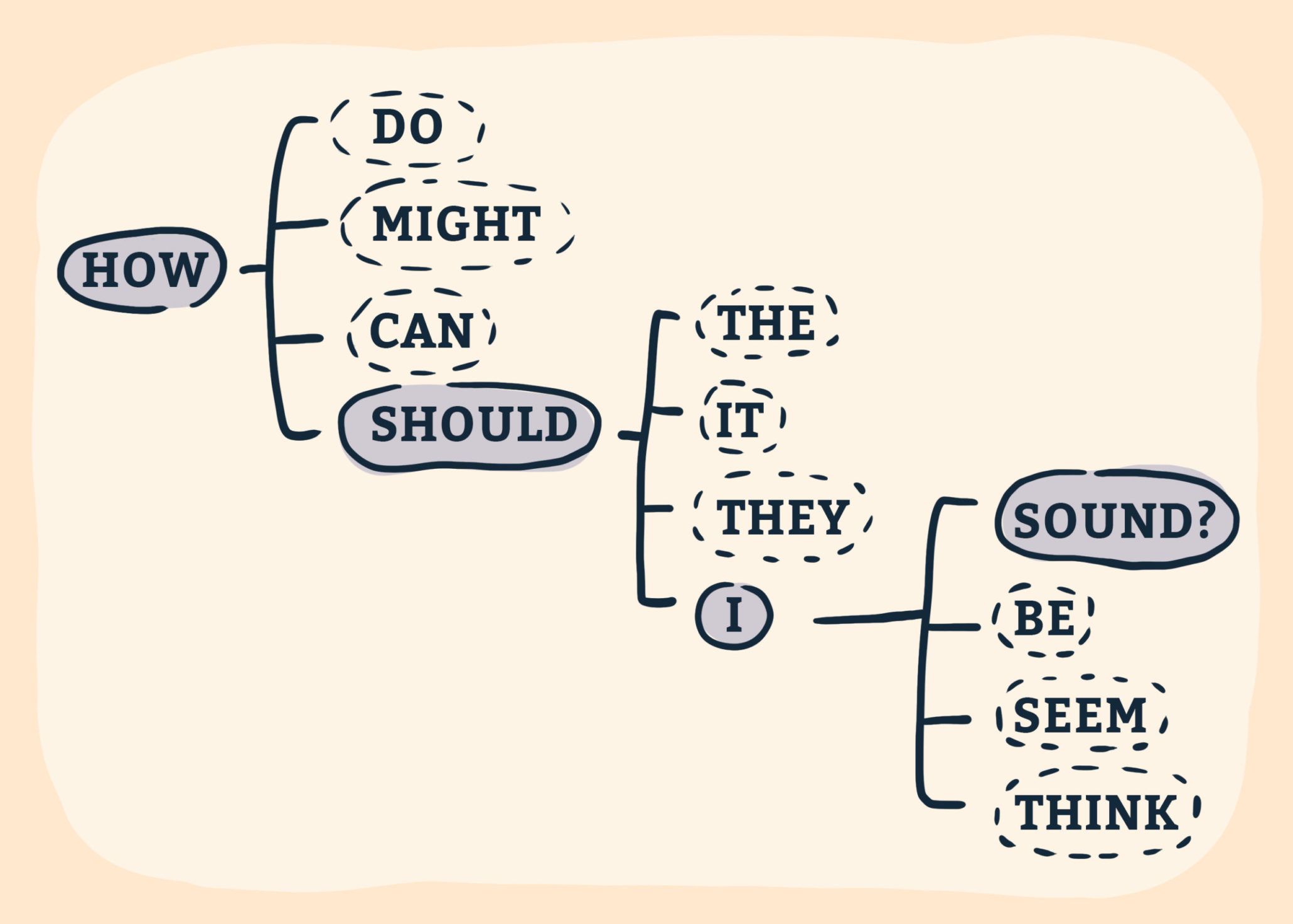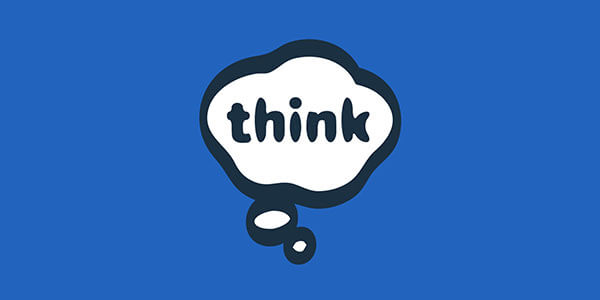Building Strong Team Communication; Our #DareConf Takeaways
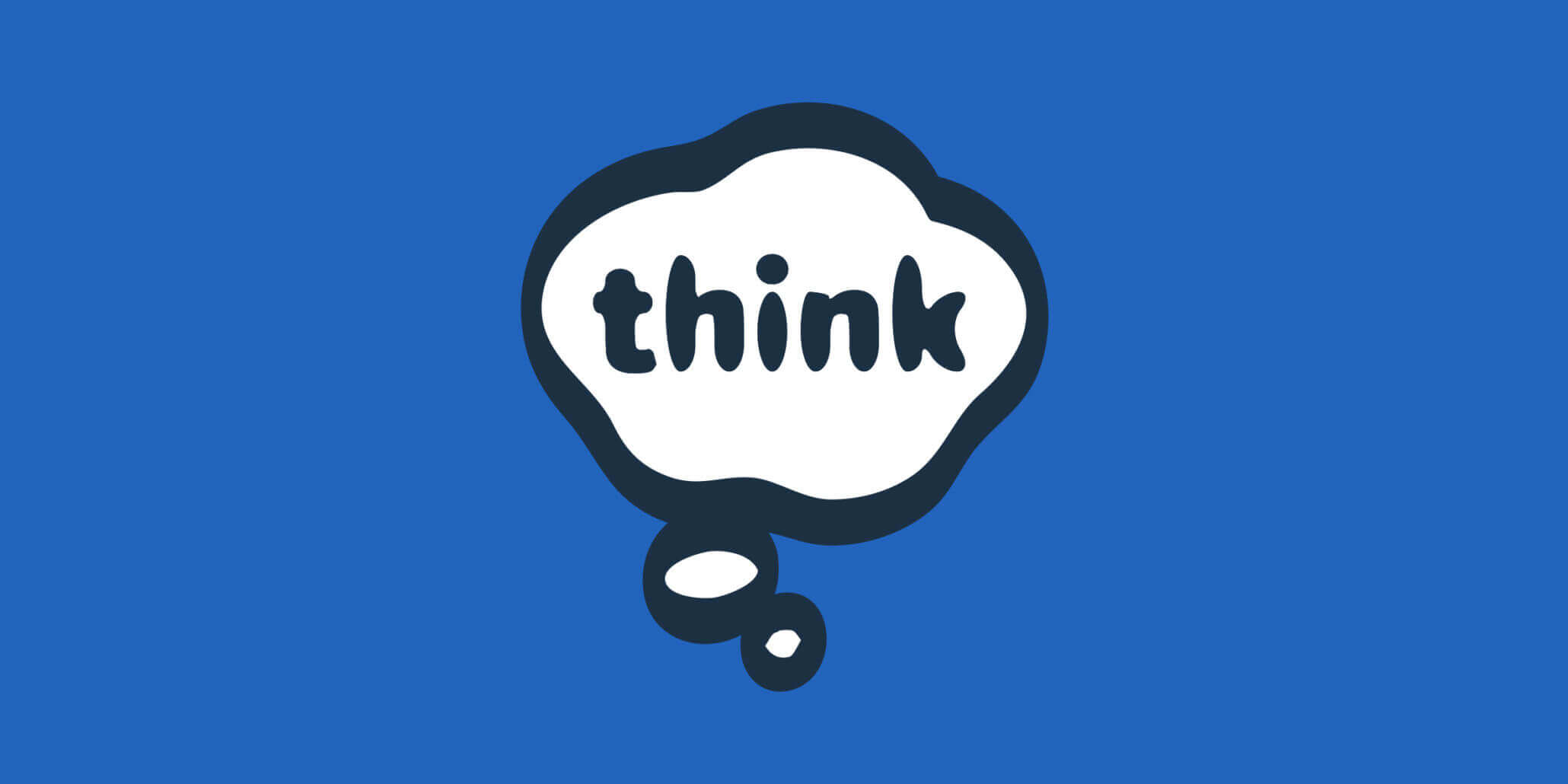
At Think Brownstone, teasing out the human side of design through facilitation and listening is built into our DNA. So when a few of us heard about the Dare Conference coming to Philadelphia (and being held in the U.S. for the first time), it felt like a no-brainer to attend.
This past week, Abby, Helene, Gina, and I participated in different parts of this outside-the-norm conference, including a full day of sessions, an after party with short talks (hosted in our Philly studio!), and a second day of hands-on workshops. We each had our eye on specific topics and exercises we thought might inform our roles on the TBI team.
What we didn’t realize was that the event would have a profound effect on the way we think about our conversations in the workplace—and everywhere else.
Below, we’ll share what we learned from #DareConf, including some of the most thought-provoking and surprising lessons on communication.
Laura’s Takeaways
I recognized almost immediately that #DareConf themes are well aligned with Think Brownstone’s Core Values—especially Work Together. The event also urged me to notice the nuances in this value, and to consider how “working together” can be challenged and improved on our own team.
Work Together
We collaborate with our coworkers and clients — valuing each others’ ideas and believing that teamwork will produce the best results.
During Sharon Bautista’s presentation on using facilitation techniques to help groups discover common goals, she talked about her biggest career change as a digital designer: moving from a creative agency to a large financial firm. She noted right away that some of her meetings “felt like duds.” Not everyone in the group was contributing equally, and sometimes she didn’t even participate.
One point that stood out about her story is that identity is important, but not fixed. When we apply labels to ourselves and others—like “designer,” “developer,” “slacker” or “overachiever”—we limit ourselves to seeing someone as an “other.” We also limit the amount of empathy we have for that person.
If we genuinely value input from everyone regardless of who they are, we should avoid coming to the table with these labels in mind. Group interactions will more enjoyable, and the end design product will better serve users.
Abby’s Takeaways
An important part of the Think Brownstone ethos is our focus on the people who will actually use the things we create—and at every stage in our process (from sales and user research to design, development, and quality assurance), we keep these people at the forefront of our discussions. This act requires a fluency in listening and asking the right questions.
Kevin Hoffman’s session focused on “active listening”—a technique that guides the way we listen, process, and react in conversations. One common approach to discussions is called “proud inquiry,” or asking questions with the intent of interjecting with what we wanted to say all along (or getting to the answer we already had in mind).
Hoffman offered “humble inquiry” as an alternative. This act incorporates “conscious dependence,” allowing you to really get to know someone and exposing thoughts that may be locked away in the other person’s mind.
“Conscious dependence” means putting yourself in a state where your success (as defined by you) is dependent on the other person’s answer. This technique flips the intent from “I really want to say this one thing, so how do I find that opportunity?” to “I need to understand what is being said or I fail.”
Tactically, we were given four approaches to ask questions that elicit constructive responses: feeling questions (“How did it make you feel?”), motivation questions (“Why did you do that?” or “What led you to do that?”), action questions (“What did you do next?”), and system questions (“What happened when you did that?” or “How did people react?”).
An important lesson I’ve learned: we can allow someone’s answer to flow independently without being led. We can also resist offering potential answers and give the other person time to respond. Awkward silences sometimes produce the greatest breakthroughs.
Helene’s Takeaways
As a developer among designers, I am easily pigeonholed into the character of “technical person” as opposed to “artistic person.” Despite my view that this is a false dichotomy, I was prepared to exercise mental gymnastics to apply Jessica Solomon’s topic, “Make bold choices by learning from the arts,” to my own work at Think Brownstone. Instead, Jessica helped me to understand how approaching our work as artistic practice applies not only to our application design and code, but also to our collaboration.
I imagine this is what happens when Think Brownstoners and clients gather for a Think Exercise. The art isn’t necessarily what comes out of it, but rather what the artists pull from the materials and unique perspectives each person brings.
I wonder what would happen if we went into work each day as if we were entering an art studio. I imagine we would want to bring our true, authentic selves to the studio. We would hope to contribute freely with a sense of fun and adventure. And we would hope to be surprised and challenged, not judged or ranked.
At the facilitation workshop, we were encouraged to imagine how our goals, once achieved, would look and sound. Here’s my vision: our development team, covered with dry-erase ink and sticky notes, hair mussed, laughing, astonished by the loveliness of the software we created together.
Well, maybe not that exactly. But I look forward to seeing what happens when we try.
Gina’s Takeaways
The biggest piece I took away from the second-day workshop was the practice of nonviolent communication. In a hands-on exercise on this style, we took personal, real-life scenarios and attempted to solve these problems with role-playing.
On a personal level, I was surprised to find that even when I thought I was having a non-confrontational conversation, “violent” language was unintentionally creeping into my vocabulary—especially when I was passionate about a topic. For example, words like “just” or “still” on the surface don’t seem confrontational, but when placed in a delicate conversation, the words actually escalated the situation.
Following the model of nonviolent communication—state an observation, identify your feeling, relate it to a need, and make a request—felt clunky and unnatural at first, but it helped me to plan for the hard discussions. I was amazed by how often identifying the other person’s need helped me to clarify an issue and reach a resolution more quickly.
In the end, we’re all humans with individual needs. When we can look at a client, colleague, employee, or boss and really recognize this, it makes having the tough conversations a lot easier.
Send us a postcard, drop us a line
Interested in working with us?
We scope projects and build teams to meet your organization's unique design and development needs. Tell us about your project today to start the conversation.

